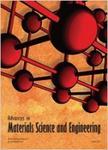版权所有:内蒙古大学图书馆 技术提供:维普资讯• 智图
内蒙古自治区呼和浩特市赛罕区大学西街235号 邮编: 010021

作者机构:Kumoh Natl Inst Technol Dept Mat Design Engn Gumi 39177 South Korea
出 版 物:《ADVANCES IN MATERIALS SCIENCE AND ENGINEERING》 (材料科学与工程进展)
年 卷 期:2018年第2018卷第1期
页 面:1-12页
核心收录:
学科分类:08[工学] 0805[工学-材料科学与工程(可授工学、理学学位)] 080502[工学-材料学]
基 金:Kumoh National Institute of Technology [2018-104-058]
主 题:OPTICAL fibers RAY tracing algorithms METAL cladding WEARABLE technology TEXTILES
摘 要:An advanced theoretical method to simulate the light delivery in plastic optical fiber is presented. The final objective is to use light as a new media for information delivery in wearable computers. A large-time-step-based ray-tracing algorithm, which was improved from our previous research, was used to simulate the light vector movement in a complex weave structure efficiently. NURBS and free-form-deformation-based modeling was used to mimic the arbitrary weave structure. Experimentally, optical fibers were modified to control the direction of light emission. Particularly, half side of a cladding layer in the radial direction was selectively removed to enhance one-sided fabric light scattering. The cladding-removed plastic optical fiber was adopted in a textile weave structure, and its light scattering was measured quantitatively by varying the removal length, fiber curvature, and fabric weave patterns. To show the validity of the proposed simulation technique, twill structures with varying number of cross repeat numbers were used as a testbed. The unit number 2 was found to be the optimal structure for light emission, when a single POF was embedded in the textile. The proposed model showed the similar result with the actual light intensity measurement, with computation time not much than one second.